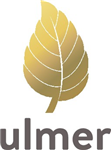Ernst Reinhardt GmbH & Co KG
With over 120 years of experience Ernst Reinhardt GmbH & Co KG is a family owned, independent publishing company and has, as of now, 750 titles available. We specialize amongst others in the fields of psychology, education, gerontology and social work and publish an average of 45 new titles every year. Internationally known as quality research literature, our publications have been translated into over 30 languages.Reinhardt Publishing cooperates with professional institutions and associations such as the German Association for Psychology or the Association for Bodypsychotherapy and is a member of utb GmbH – a university-focused joint venture of 15 German academic publishers.
View Rights Portal
































